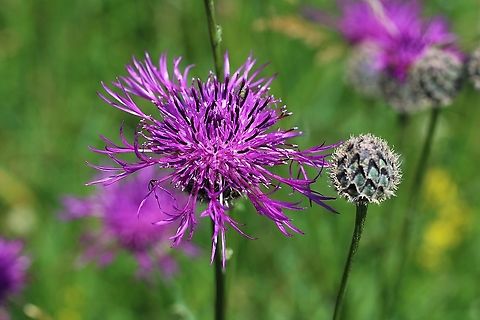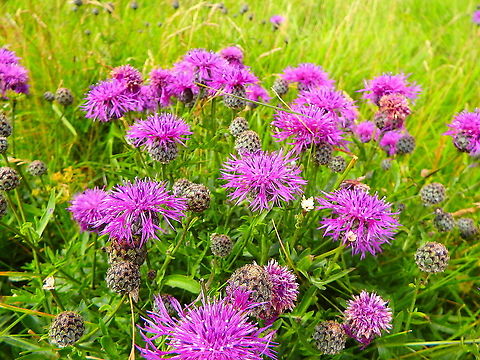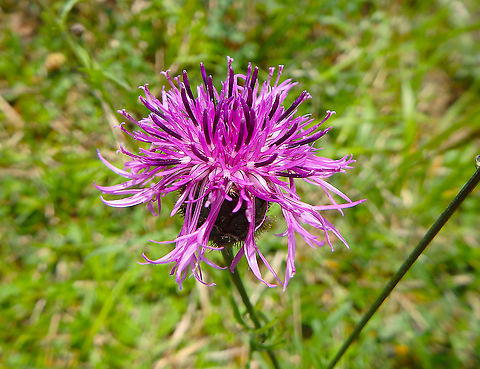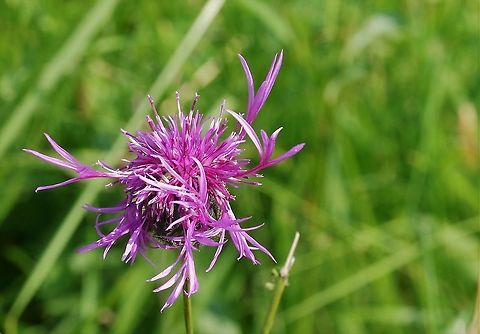
Appearance
This perennial herb grows with an erect grooved stem up to 90 cm high. The leaves are alternate, pinnatifid and with stalks. The flower heads are 5 cm across and on long stalks. The florets are red-purple.Greater knapweed is found growing in dry grasslands, hedgerows and cliffs on lime-rich soil. Upright branched stems terminate in single thistle-like flowerheads, each having an outer ring of extended, purple-pink "ragged" bracts which form a crown around the central flowers. The plant has deeply dissected leaves which form a clump at the base.
The plant is sometimes confused with devils-bit scabious, however the leaves on this plant are arranged alternately, whereas in devils-bit they are opposite.

Predators
This is the only known food plant for caterpillars of the Coleophoridae case-bearer moth "Coleophora didymella". "Centaurea scabiosa" has been used in traditional herbal healing as either a vulnerary or an emollient.References:
Some text fragments are auto parsed from Wikipedia.

